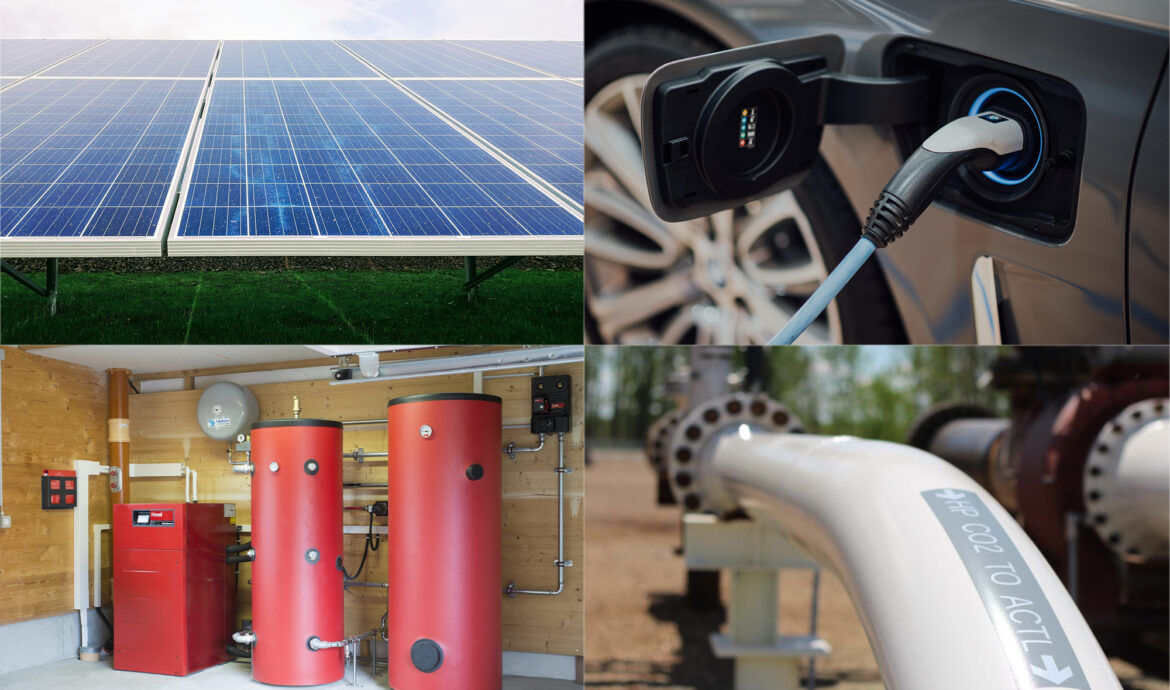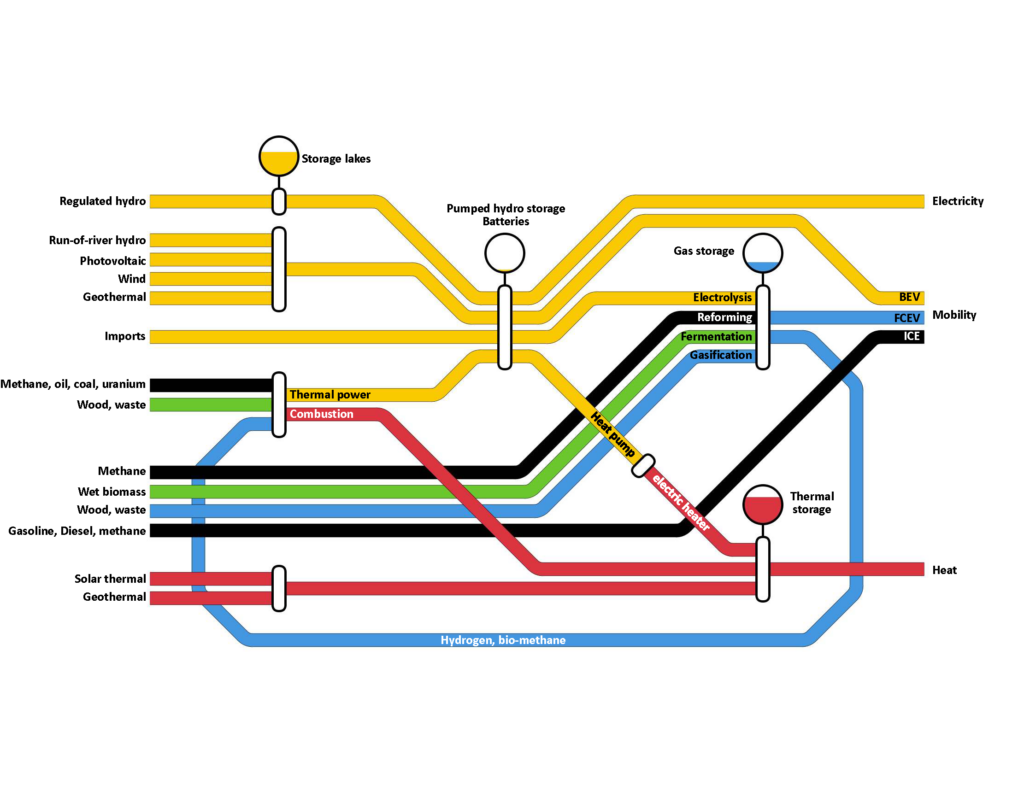
Why we need net-zero emissions scenarios for mid-century
On 27.04.2021 by Gianfranco GuidatiGianfranco Guidati is a mechanical engineer who came to Switzerland 20 years ago to work as a researcher for the power plant manufacturer Alstom. His job was to look beyond the current business and to anticipate the transformation that this business will face. In early 2017, he joined ETH as a program manager for the SCCER Supply of Electricity. In March 2021, he joined the Energy Science Center (ESC) as project manager for the ReMaP project. He loves the energy field because it is not just about technology, it is politics, society and the way we want to live in the future.
Our goal is not to predict the future, rather to shape it. Net-zero scenarios for the energy system help us do that. Although they deliver only a blurred view of the future, they allow us to guess the shape of things to come, and most importantly to formulate actions for today that will put us on the right track.
Why do we need net-zero emissions scenarios for the middle of the century? In short: because they may tell us what we need to do today!
Four years ago, researchers from several research institutes throughout Switzerland embarked on a journey to the future to discover how the country could completely satisfy its energy demand without emitting any greenhouse gases. This exciting journey just ended and we want to share our findings on the importance of electrification and the capture and storage of CO2.
The name of the project was JASM (Joint Activity Scenarios & Modelling) and indeed models — specifically, energy system models — are the bedrock. We mathematically represented the energy system where every element (e.g., the actual size and arrangement of a power plant or a heat pump) is described — usually in a very simplified way.
At first, the future is an infinite manifold of possibilities. The important step is to reduce this manifold by applying restrictions. Then, rather than making predictions, we study these possible futures to derive concrete actions for today.

The energy system is a network of energy streams, connecting the primary resources to the demand, including conversion and storage technologies. Image by author.
For instance, in the JASM project we only look at the possible futures where CO2 emissions are zero and we define boundary conditions such as population growth, climate change or technology cost evolution. Since many of those factors are uncertain, we give ranges instead of a single number.
With a much smaller subset of possible futures we can look for patterns and here’s what we found.
Actions Today for Net-zero Tomorrow
What is indispensable to reach net-zero emissions is the separation and storage of CO2, not only from fossil origin, e.g., from cement production or natural gas-fired power plants, but especially biogenic CO2 from biomass growth, which allows for negative emissions – the net removal of CO2 from the atmosphere. Negative emissions can be realized in waste incineration plants and by converting biomass to hydrogen while separating CO2, for instance through wood gasification. So given all uncertainty about the future, we have one clear action we can take today: prepare a CO2 transport and storage infrastructure.
Some insights might be less surprising: the basis for decarbonization is electrification — in the heating sector by heat pumps, in the transport sector by battery electric vehicles. The actions are clear: new buildings must stop using fossil heating technologies, while incentives for renovating houses and switching to heat pumps should continue. It is also important to remove obstacles for deploying the necessary vehicle charging infrastructure in private buildings.
But electrification will increase electricity demand. One central question in our work was how to deliver more electricity while at the same time phasing out nuclear generation. In a nutshell, we will need to grow hydro power generation, photovoltaics, thermal power plants and imports.
There is indeed a large subset of possible futures where PV generation reaches levels that are ten times higher than today, and this implies an array of additional measures: short term electricity balancing by batteries and pumped hydro, flexibility by heat pumps, EV charging or hydrogen production by electrolysis.
However, there is an alternative to PV generation. Why are we not simply importing the missing tens of terawatt-hours per year? This is first of all an economic, and then a political question. What will electricity prices be in the middle of the century? How will markets and nations be organized? How will the next generation think about self-sufficiency? Nobody can answer these questions today, but we can decide to keep all options open by making PV mandatory on all new buildings.
Last but not least, is there something we shouldn’t do?
Yes, we should not be worried about the future. When you look at this manifold of possible futures, you start seeing the opportunities, not the threats. The energy transition will lead to a boost of innovation in technology, the way we live, move and work. I am excited to be part of this endeavour and look forward to putting our insights into practice!
Cover photo:
Top left: Mariana Proença for Unsplash
Top right: CHUTTERSNAP for Unsplash
Bottom left: Hoval
Bottom right: Alberta Carbon Trunk Line
Keep up with the Energy Blog @ ETH Zurich on Twitter @eth_energy_blog.
Suggested citation: Guidati, Gianfranco “Why we need net-zero emissions scenarios for mid-century”, Energy Blog @ ETH Zurich, ETH Zurich, April 27, 2021, https://blogt.ethz.ch/energy/net-zero-emissions-scenarios/
If you are part of ETH Zurich, we invite you to contribute with your findings and your opinions to make this space a dynamic and relevant outlet for energy insights and debates. Find out how you can contribute and contact the editorial team here to pitch an article idea!

